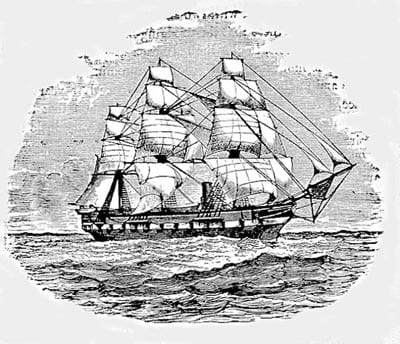
H.M.S. Challenger
The H.M.S. Challenger embarked from Portsmouth, England on December 21, 1872 and changed the course of scientific history. Physicists, chemists, and biologists collaborated with expert navigators to map the sea. This interdisciplinary spirit has continued to the present day. During the 4 year journey, the voyages circumnavigated the globe, sounded the ocean bottom to a depth of 26,850 feet (8,184 m), found many new species, and provided collections for scores of biologists.
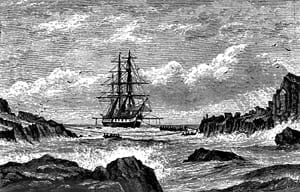
The Challenger at St. Paul’s Rocks
The Challenger was a corvette class ship, a military vessel that traveled under sail but had auxiliary steam power, which helped to stabilize the vessel during sampling. Sixteen of the ship’s 18 guns were removed, and in their place were installed miles of sampling rope and wire, thermometers, water bottles, and bottom samplers.
C. Wyville Thomson led the expedition but died of exhaustion from the journey, which ended on May 24, 1876. The Challenger had zig-zagged around the globe and had visited every continent, including Antarctica.
The reports of the Challenger expedition were supervised by Sir John Murray, whose biological conclusions were of great importance to the later development of marine biology. He concluded, for example, that the deep-sea fauna was not “ancient,” in that it did not resemble the faunas found in ancient fossil deposits.
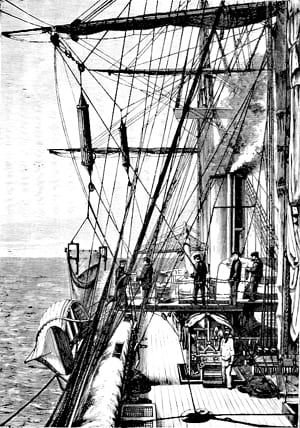
Instrument and Sampling Platform
This is the platform from which sea-going instruments were employed and where various samplers were deployed. Can you see the trawl hanging over the side?
The Challenger was equipped with 144 miles of sounding rope and 12.5 miles of piano wire for sampling gear.
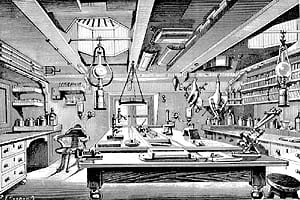
Natural History Laboratory
This was the all-important natural history laboratory, where specimens were examined, identified, dissected and drawn. The Challenger expedition produced 50 volumes, most of which described the organisms collected from both deep and shallow water. Much of what we understood about world ocean biogeography for the next 75 years stemmed from analyses of collections made on this journey. This laboratory and the collections also reflected a deep collaboration between natural historians and other ocean specialists such as physicists and chemists.
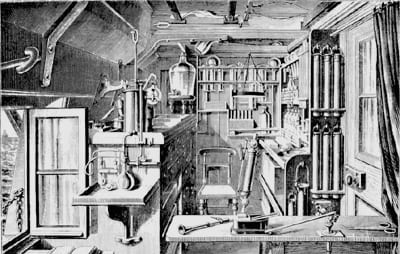
Chemistry Laboratory
The chemistry laboratory contained sophisticated equipment for the time, and was the place where salinity, carbonic acid and other chemical variables were measured.
An important biological idea was debunked here, inadvertently. The German biologist Ernst Haeckel postulated the presence of Bathybius, a primordial slime on the bottom of the sea, and Thomas Huxley confirmed the idea by publishing an account in the British journal Nature concerning a white slime that came up in bottom deposits. During the Challenger expedition, James Buchanan demonstrated that the white slime was merely a precipitate of calcium sulfate, which formed in alcohol.
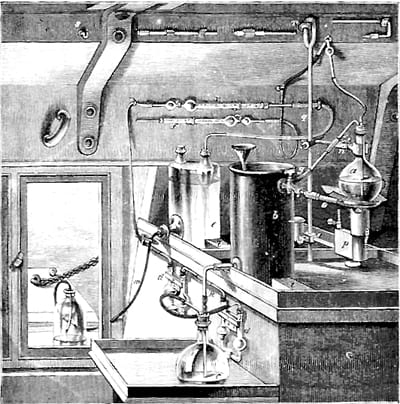
Carbonic Acid Analysis Apparatus
Gas analysis began with an ingenious boiling device shown here. Evaporating gases could be trapped, as was carbonic acid, which was analyzed by chemical titration. This laboratory allowed a mapping of ocean chemistry throughout the world. this apparatus was especially important for properties such as carbonic acid, which had to be analyzed soon after the sample was collected.
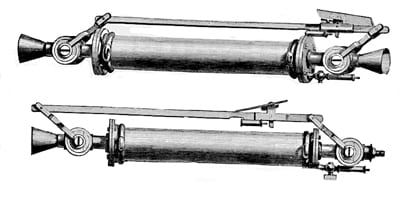
Buchanan Water Sampler
This was the water sampler used in the Challenger expedition designed by James Buchanan. Samper is sent over the side on a wire as on top. Bottom picture shows the sampler in closed position.
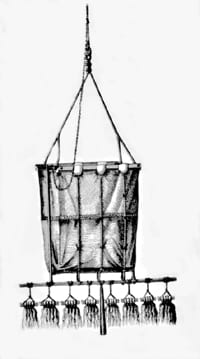
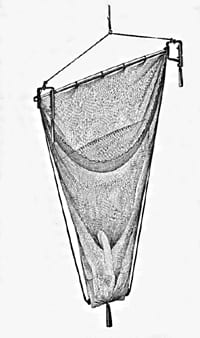
Bottom Samplers
One of the great accomplishments of the Challenger expedition was the collection of deep and shallow water biological specimens throughout the world. At left is a shallow-water dredge, whereas a deep-sea trawl is shown at right.
Consider the difficulties of sampling: One trawl was put over the side at 9 A.M. in a bottom sounded at 1950 fathoms (11,700 feet or ca. 3,600 meters). “The trawl was hauled in at 5 P.M. The beam was broken through the middle, and otherwise strangely torn and crushed, by the combined action of the pressure to which it had been subjected, and the strain of pulling it up rapidly through three miles of water. The wood was driven in and compressed so as to reduce the diameter of the beam by half an inch, and the knots projected a quarter of an inch on all sides.”
The samplers lacked a closing device, which later proved to be a real disadvantage for the deep-sea trawl. Many organisms were washed out, and this led to a mistaken impression that the deep-sea bed was uniformly depauperate of species. Nearly a century later, Howard Sanders and Robert Hessler used better samplers and showed that deep-sea bottoms could be rich in soft-bottom benthic species.
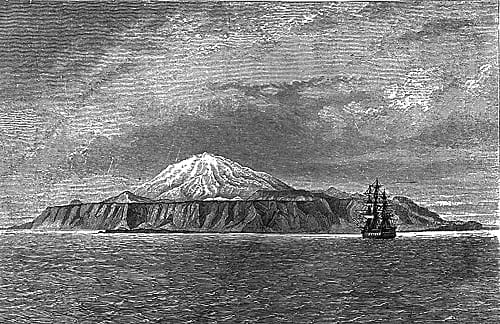
The Challenger Arrives at the Island of Tristan D’Acunha
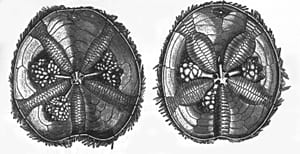
Hemiaster phillipi
Because so many specimens were carefully collected and preserved on the expedition, many specialists had access to collections over a broad geographic region. Here we see the urchin Hemiaster philllipi collected from Kerguelen Island, near the Antarctic Circle. Unlike lower latitude relatives, it is a brooder,which has turned out to be a common feature of Antarctic echinoderms.
This drawing was taken from one of the report volumes of the Challenger expedition.
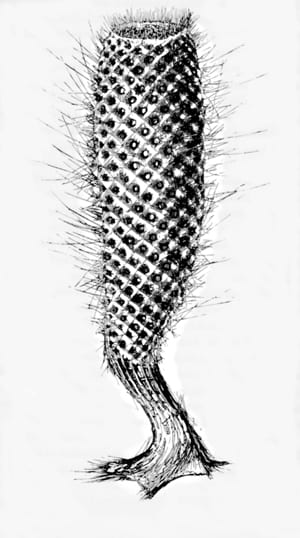
Euplectella subearea
This is a lovely deep-sea glass sponge, and the published drawing is typical of the high-quality artistry of the expedition.
Haeckel’s Plankton
Ernst Haeckel, one of the greatest biologists of the 19th century, contributed to the Challenger volumes and drew among the loveliest depictions of smaller plankton. A few are included here:
Dinoflagellates:
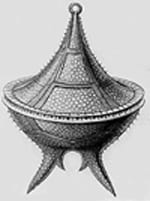
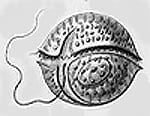
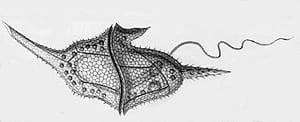
Foraminifera:
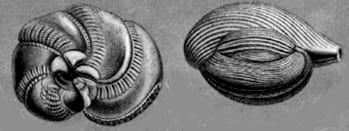
Radiolarians:
Dress of People of San Miguel
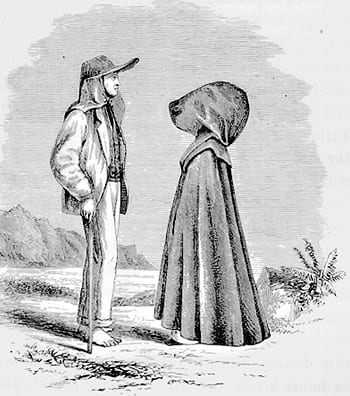
The voyage was reported in 50 volumes and much of the text of the two summary volumes is devoted to fascinating people, costumes and scenery. For example, King Thackery of the Fiji Islands of the Pacific was converted to Christianity, but had earlier cut out a victim’s tongue, and then proceeded to eat it in his victim’s presence, before eating the rest of him. Most of the other people encountered were less disturbing.
The figure above shows the dress of two people of San Miguel, in the Azores.
